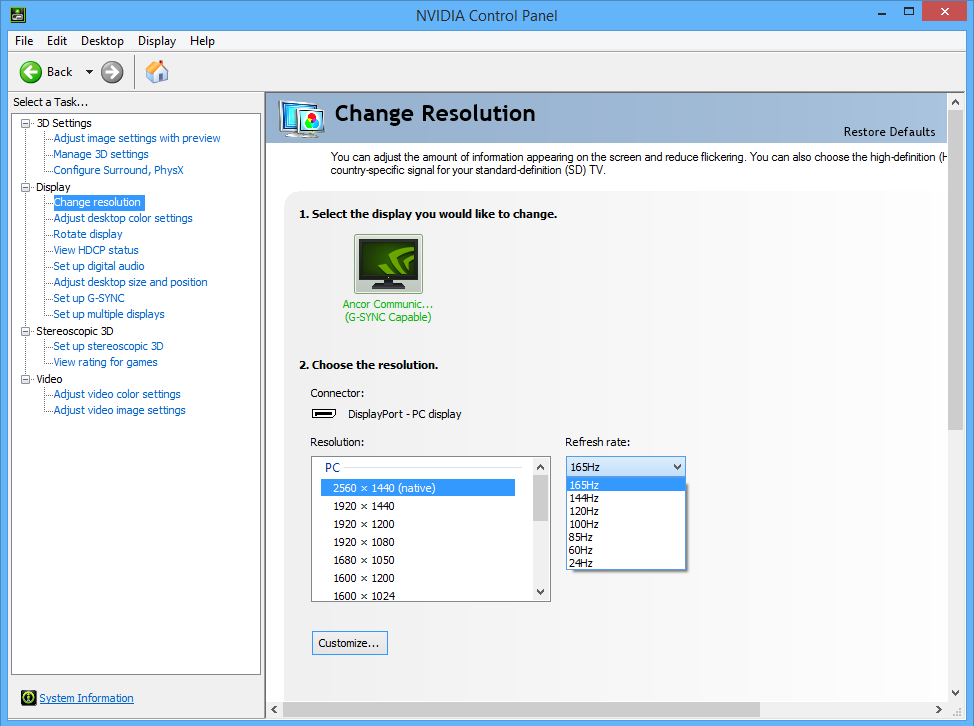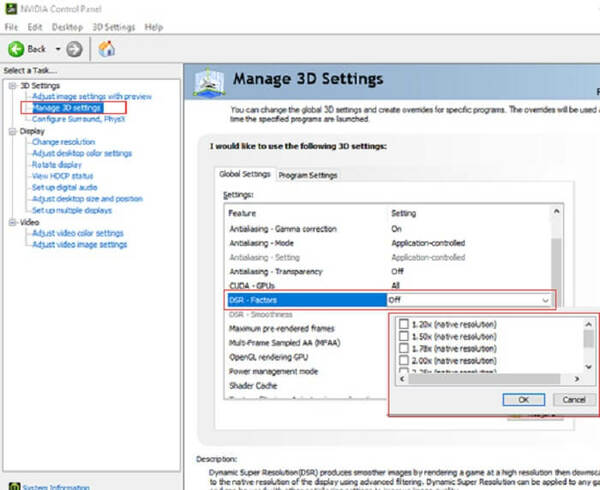

- Enable nvidia power management mode option how to#
- Enable nvidia power management mode option install#
- Enable nvidia power management mode option drivers#
- Enable nvidia power management mode option download#

On the Select displays tab, match the resolution for each display you have and set the overall refresh rate for the Mosaic. In the NVIDIA Mosaic set up window on the Select topology tab, select Maximum GPU Topology. Navigate to Set up Mosaic, and choose Create new Configuration to open the NVIDIA Mosaic set up window. For more on EDIDs and what they are, refer to the EDIDs section. Navigate to View system topology, and click EDID to export and load an EDID on any used output ports to ensure the display information is locked and not queried again.Īlternatively, you can manage EDIDs through an external hardware device such as a matrix or switcher. (mGPU using SLI only) Navigate to SLI and PhysX Configuration, and select Maximize 3D performance. Under Settings, set Power management mode to Prefer maximum performance. Set Global Presets to Workstation App - Dynamic Streaming. NDisplay should only output to the primary display, and if more than one video output is necessary configure them as one large desktop with NVIDIA Mosaic.Įvery display must be connected and share a common resolution, refresh rate, and color management: Refer to NVIDIA's Quadro Sync II User Guide for more details on these steps. We recommend monitoring the sync LED indicators on the Quadro Sync II card and with the NVIDIA Control Panel settings to ensure that synchronization is maintained throughout production.Ĭonnect the cables for this setup in such a way so that you can easily restart the nDisplay nodes in the reverse order of the NVIDIA sync daisy chain. Once configured, NVIDIA sync should remain in place unless a machine crashes or locks out to the Windows login screen. Refer to NVIDIA's Quadro Sync II User Guide for more details on these steps Specifically, ensure the vertical sync (vsync) global setting is set to Use the 3D application setting. RJ45 cables daisy chain the remaining sync cards in the remaining nDisplay nodes for framelock.Ĭonfigure the NVIDIA Control Panel for sync.
Enable nvidia power management mode option download#
Select your card type and OS and set Download Type to Production Branch / Studio to find the recommended driver.Ĭonfigure the system with daisy-chain connections that uses both genlock and framelock:Īn external sync source comes into the master sync card via a BNC cable for genlock
Enable nvidia power management mode option drivers#
You can find the recommended driver for Virtual Production on NVIDIA's Download Drivers page.
Enable nvidia power management mode option install#
Install the latest drivers from NVIDIA, version R512.59 or later. Refer to In-Camera VFX Recommended Hardware for recommendations on hardware to use for your set up. One way you can convert the signal is with an adapter. If your Quadro card only has a DisplayPort output but the LED processor only accepts HDMI input, then you must convert the signal. PCs running Windows with identical specifications for each nDisplay node. Cards must have the same specification for each nDisplay node. You must have the following set up to complete the steps below.Īn NVIDIA Quadro Sync II card per nDisplay node.Ĭompatible Quadro GPUs. We recommend that you spend time preparing your nDisplay cluster nodes with synchronization before a Virtual Production shoot. Refer to Synchronization in nDisplay for more details on how synchronization works in nDisplay.Īt present, obtaining correct synchronization across nDisplay nodes can require some troubleshooting.
Enable nvidia power management mode option how to#
This page describes how to set up synchronization in nDisplay with NVIDIA GPUs.

Synchronization across multiple nDisplay cluster nodes (PCs) is essential to avoid tearing between LED seams and to ensure the camera does not capture different rendered frames presented on the LED wall. Step 7 - Validating Sync and Troubleshooting Step 5 - nDisplay Configured for NVIDIA Synchronization


 0 kommentar(er)
0 kommentar(er)
